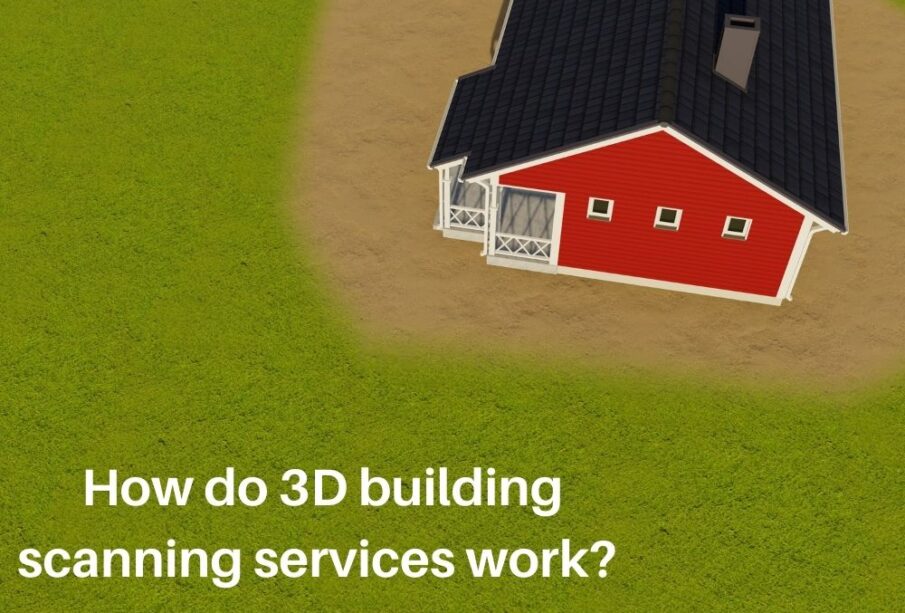How do 3D building scanning services work?

Do modern innovations make you think about the process behind the work? Laser scanning is a technology in manufacturing that raises the question, how does it work? It is definitely not a magical power that we have unlocked. The 3D building is the perfect operation to make scanning services so simple and efficient.
BIM companies manufacturing for laser scanning are ready to benefit from the advance of scans. This is expected to benefit owners, buyers, investors and all concerned professionals. With an estimate of growth at such a steady rate, let’s understand everything about BIM laser scanning and how it works.
Built-in laser scanning
3D building scanning services use BIM laser scanning to create specific virtual models of specific segments in the building. The scanner rotates 360 degrees and attaches its beams to a number of surfaces in that space.
BIM laser scanning is a technique based on the principle of non-contact that uses laser beams of light to accurately record the geometry of real objects. The device generates a point cloud of data that runs from a point cloud to an application for BIM services.
The scanner continues to capture high-quality images of the scene while collecting data. The information with these photographs is then cited together to create a virtual model that offers a walk-through of the property. This simulation is technically accurate, with precise parameters obtained by the scanner, making it possible to analyze even the smallest elements.
BIM laser scanning procedure
The amazing facilities offered by SCAN to BIM companies arouse curiosity about how this process is handled. What steps should be followed for maximum accuracy? Let’s take a look at this.
To obtain data with laser scanning, the laser beam is driven over the surface of the structure by special software. The two sensor lenses capture the changing proximity and shape of the beam path in 3D continuously as it rotates around the surface while the laser sensor sends the beam across the surface.
As the scanner collects the entire surface contour of the unit, the outline of the subject is displayed as point clouds on the monitor. Then comes the phase of point clouds in BIM services to convert raw data into virtual models.
Categories of 3D scanners
There are three types of laser scanners for production:
Terrestrial laser scanner (TLS)
Terrestrial laser scanners are usually shortened to TLS. When the scanning process is in progress, it is usually located on a tripod. They have the best accuracy of all types of scanners. This is because the gadget remains motionless while the imaging activity continues.
Mobile laser scanner
Mobile laser scanners (MLS) are commonly used in digital 3D mapping and monitoring as well as automated vehicle sensor technology, which allows speed routing to be controlled. They are quite small and lightweight, which makes them easy to carry from one place to another.
Aerial laser scanner
An aerial leader is a piece of scanning equipment that is mounted on an aircraft and operated during flight. The device can be moved from site to site using a movable ground-based system such as a truck. Due to their portability, aerial scanners have a poor level of accuracy. This is used to collect information about geographical features or terrain in the form of point clouds.
Application of laser scanning in construction
Various services for scanning from Revit Scan to BIM have proved to be extremely useful for the AEC sector. Here are the applications of 3D building scanning services in the construction industry.
Accurate documentation with site verification
Project plans can be inconsistent, resulting in costly delays if accurately designed data is not provided. Thanks to the introduction of laser scanning in manufacturing, this should no longer be the case. Construction companies can use the 3D scanner to develop newly constructed documents and check the condition of the site, once demolition is finished, saving up to 75% of the process.
Convert scan to BIM for conflict detection
For enhanced synchronization and conflict detection, a ravit scan for BIM can be adopted. Drifters can create 3D BIM models to visualize schematic designs in space using a true perspective walkthrough. This makes it easier to find the wrong plans. This approach allows business teams to work more efficiently and avoid costly delays.
Virtual integration
Online trading skills are especially useful in today’s emerging strategies, such as the COVID-19 epidemic. Construction companies can use technologies such as 3D building scanning services to reduce their reliance on sites and shift to a hybrid approach to remote and on-site operations.
Progress monitoring
Laser scanning in construction can also be adopted to show regulatory bodies or customers that the construction completed on-site matches the official design. Visitors to the walkthrough can use virtual measurement tools to measure and check whether development complies with specifications. Management can use 3D scanning for easy operation and cross-checking of progress.









